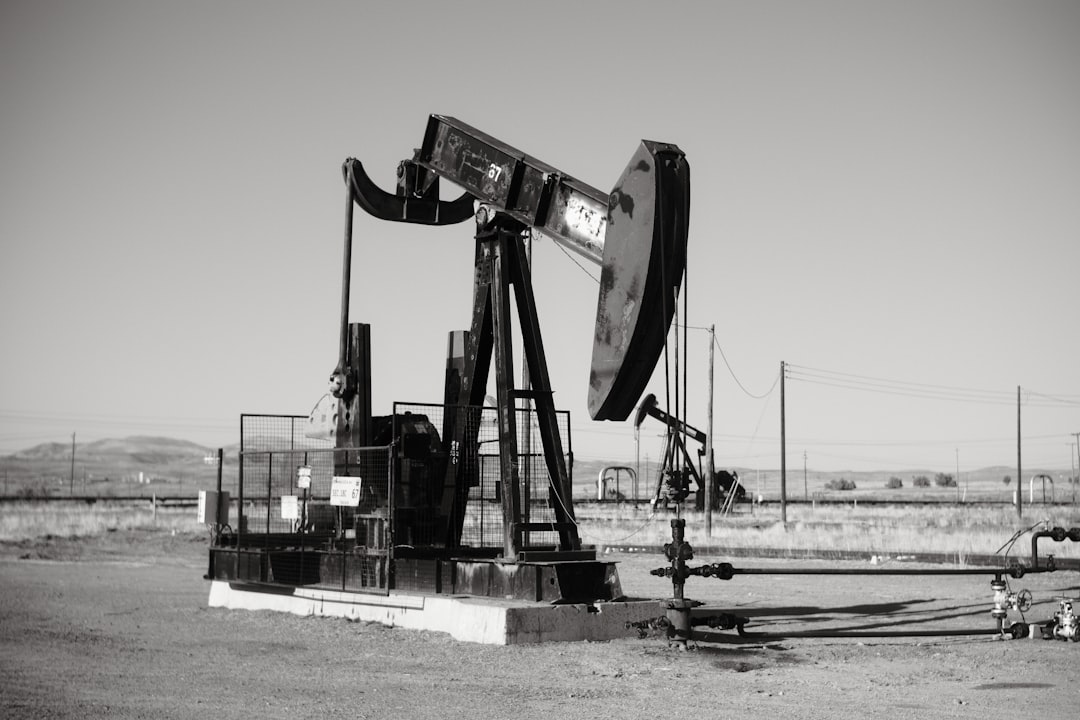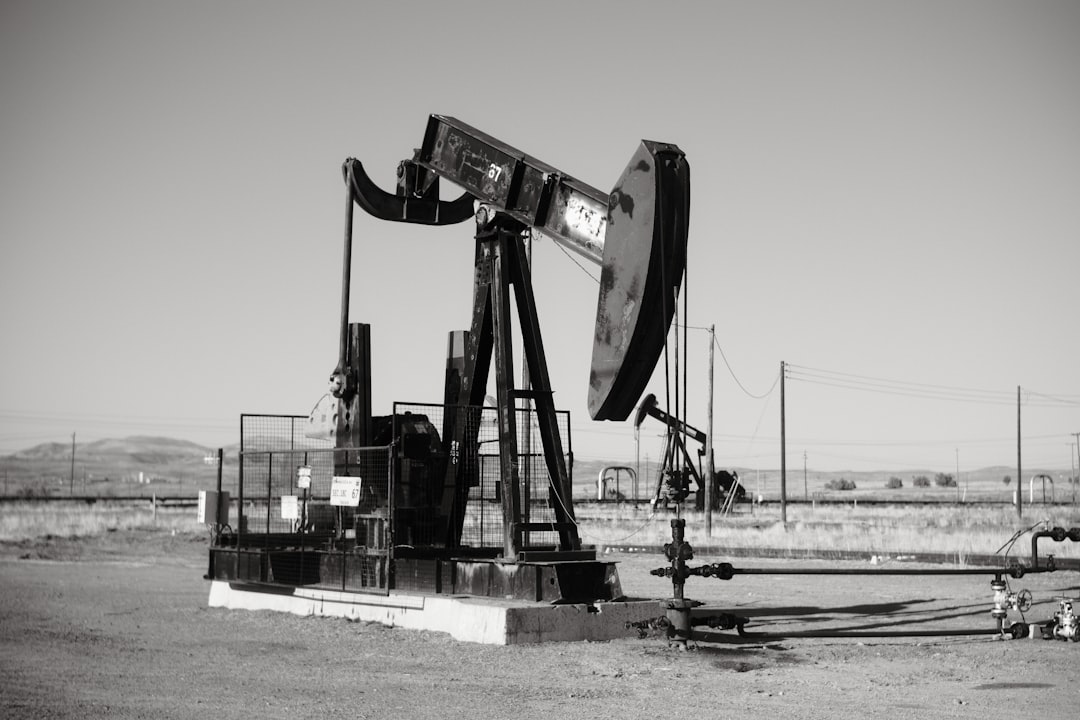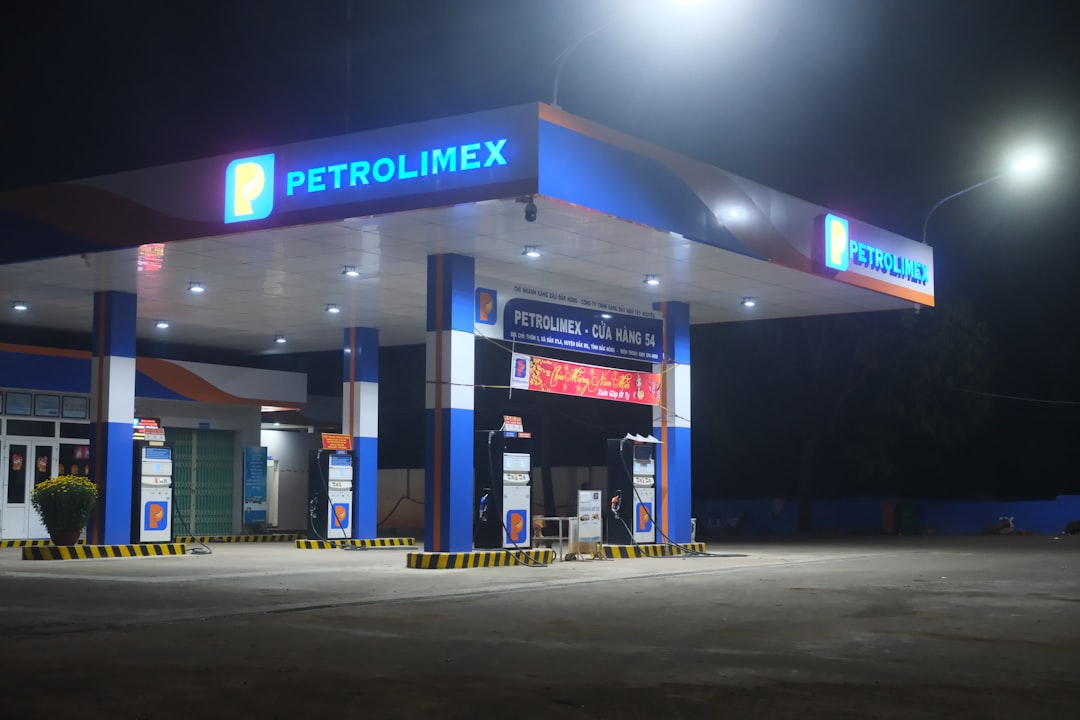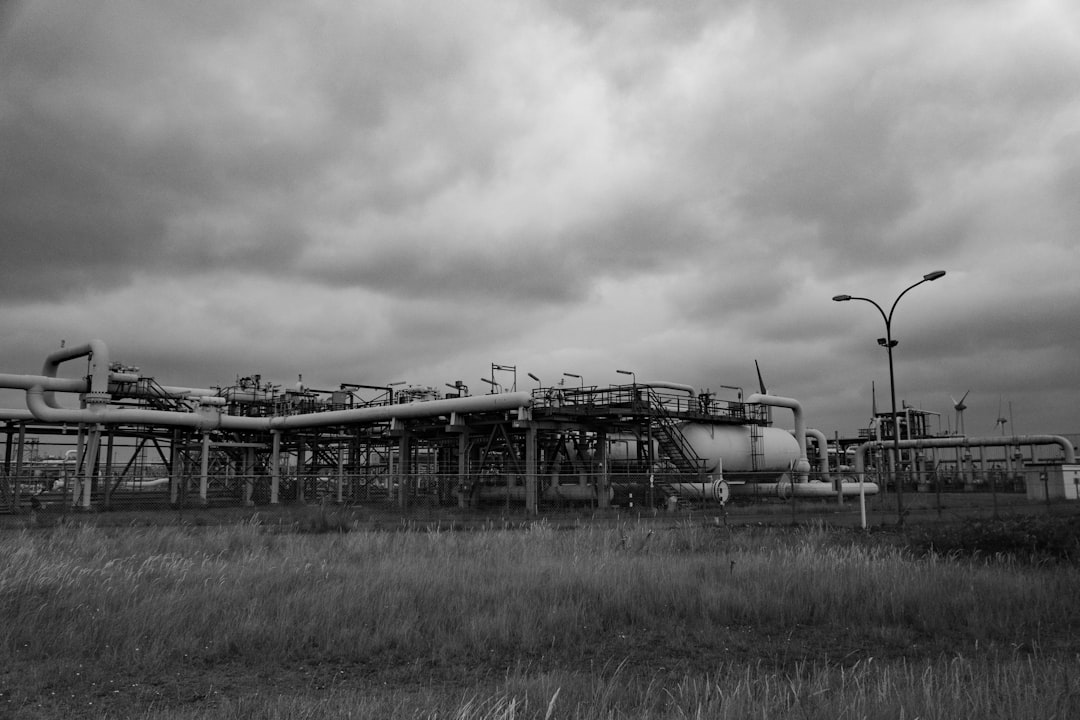

Engage prospects with a scan and streamline customer engagement with FREE QR code marketing tools by Sona – no strings attached!
Create a Free QR CodeFree consultation

No commitment

Engage prospects with a scan and streamline customer engagement with FREE QR code marketing tools by Sona – no strings attached!
Create a Free QR CodeFree consultation

No commitment
Petroleum companies face increasing pressure to innovate amid shifting market demands, evolving safety standards, and the urgent need to deliver seamless customer and operational experiences. Manual processes, from safety inspections and asset tracking to loyalty program signups, often leave high-value prospects and critical compliance data unrecorded, resulting in missed opportunities and increased risk of regulatory lapses. The impact is felt at every level, from operational inefficiency and lost revenue to diluted customer experience.
QR codes have rapidly emerged as a strategic asset in petroleum companies, enabling instant, reliable connections between field operations, customers, and digital systems. In a sector where missing or fragmented data undermines business outcomes, QR technology allows for real-time engagement and frictionless data capture, solving the persistent challenge of identifying and acting upon high-intent interactions both on-site and online.
By embedding QR codes into day-to-day touchpoints, from fuel pump signage and equipment tags to incident reporting logs and marketing collateral, petroleum companies can bridge previously disconnected workflows. This supports efficiency and compliance while addressing the pain of untracked or anonymous engagement by turning every scan into a traceable opportunity. This guide shows how to leverage QR codes to enable access for petroleum companies, unlocking measurable business outcomes while supporting sustainability, security, and an improved customer experience.

Connecting physical assets and offline environments to digital actions is essential for petroleum companies seeking to overcome missed opportunities and bottlenecks caused by outdated systems. Paper-based checklists and manual logs often delay follow-up or create fragmented records, making it difficult to act quickly and keep vital information unified. QR codes solve this by making every physical touchpoint an immediate trigger for digital action, from opening a pre-filled incident report to confirming a safety briefing.
Modern QR code platforms let you route scans to specific destinations that match the operational context. For example, a QR tag on a fuel pump can link to a mobile-optimized loyalty signup, while a code on a spill kit can open the correct safety data sheet based on the product in use. When integrated with systems of record, such as a CMMS for maintenance or a CRM for customer engagement, each scan is timestamped, attributed, and analyzed for continuous improvement.
Some companies have replaced error-prone paper inspection lists with QR-enabled digital checklists, allowing technicians to timestamp, complete, and instantly sync compliance data to central systems. The result is a narrow window in which safety or operational issues can go unresolved, improved accountability, and faster closeout of corrective actions. When paired with platforms such as Sona QR for code management and Sona.com for attribution, petroleum companies can connect scans to outcomes like reduced downtime, improved safety KPIs, and measurable revenue lift. See Sona’s blog post titled The importance of accurate revenue attribution for context.

A common frustration in petroleum companies is the difficulty of bringing field teams and customers into digital workflows without causing lost data or introducing complexity. Offline-to-online gaps mean that customers or partners who engage with your brand at a pump station or on equipment often remain invisible in your marketing, compliance, or safety systems. This loss of visibility breaks the chain between engagement and actionable insight, making it hard to prove ROI or demonstrate regulatory adherence.
QR codes provide simple, universal access through the camera that is already in every pocket. There is no app to install and no kiosk to maintain, which reduces friction and increases adoption. With dynamic QR codes and routing, you can update destinations and content without reprinting, which is critical when rules, promotions, or procedures change. For campaign best practices, explore marketing with QR codes. Most importantly, each scan becomes a signal that can be attributed to a location, asset, or campaign, so you see what is working and where to optimize.
Applied to common petroleum materials such as pump toppers, c-store shelf talkers, spill response posters, technician lanyards, and driver handbooks, QR codes make each asset actionable and measurable. They also help unify interactions across retail fueling, lubricants, and B2B fuel services, giving leadership a connected view of the customer and the operation.

Petroleum companies operate complex environments with distinct audiences: retail customers, fleet drivers, contractors, technicians, regulators, and community stakeholders. Each group needs different information and actions, so matching QR formats to use cases is critical for adoption and impact. Choosing the right format also influences data capture, security, and user experience.
Dynamic QR codes are particularly valuable in this sector since procedures, promotions, and documentation change often. Static codes can still work for evergreen content like a fixed safety data sheet, but dynamic codes ensure flexibility and deliver analytics. Your platform should support both, with access controls and link management to keep sensitive content secure.
Advanced platforms support short links, device detection, and campaign parameters. With Sona QR, you can create all these formats in one place, govern them centrally, and update destinations as programs evolve. For safety-sensitive content or proprietary documentation, consider adding single-use links, password protection, or SSO to control access.

High-potential QR touchpoints are scattered across a petroleum company’s footprint: fuel islands, c-store interiors, forecourts, foremen trucks, terminals, depots, tank farms, and corporate offices. Without a deliberate plan, you end up with inconsistent adoption, poor data quality, and missed insight into what customers and teams need in the moment. A coordinated approach ensures every scan contributes to a complete picture of engagement and performance.
Start with a map of your physical and printed assets, then overlay your priority outcomes such as higher loyalty enrollment, faster safety reporting, or more efficient service verification. Match each location to a specific QR destination and call to action. Assign ownership and set benchmarks so you know whether a placement is succeeding or needs optimization.
Coordinating QR strategy across these touchpoints turns anonymous interactions into data-rich signals. You can then analyze patterns by region, franchise, or asset type, and use those insights to refine promotions, training, and operations. Over time, QR placements become an always-on sensor network for your business.

Old-fashioned logbooks and generic forms make it hard to tie specific interactions back to outcomes such as reduced incidents, higher revenue, or better customer retention. QR-enabled workflows address these challenges by capturing the who, when, and what of each engagement, and routing that data to the right system automatically. Below are practical use cases that align with common petroleum company goals.
For operations and safety, QR codes provide immediate access to the latest procedures and enable structured reporting. For customer experience and revenue, they activate on-site traffic and connect it to digital journeys, so marketing can follow through with personalized messaging and offers. Deployed together, these use cases create a connected loop between field execution and corporate strategy.
Each use case should have a clear owner, a defined destination experience, and a measurable outcome such as completion rate, average time to resolution, or revenue per participant. That discipline turns QR codes from a novelty into a performance lever.
On-site engagement often goes untracked, which makes it difficult to retarget prospects who demonstrate real intent. By assigning unique codes to discrete touchpoints and mapping them to funnel stages, petroleum companies can build highly targeted audiences based on actual behavior rather than assumptions. The same approach works for safety and operations by segmenting scans by location, incident type, or asset class to prioritize follow-up. For paid media execution, see Sona’s Playbook titled Intent-Driven Retargeting: Driving High-Impact Campaigns with First-Party Intent Signals.
For customer marketing, consider distinctions such as retail fuel customers versus fleet cardholders, in-store shoppers versus at-pump scanners, and coupon hunters versus high-value buyers. For B2B and wholesale, distinguish between procurement contacts, maintenance decision makers, and drivers. These segments determine the best follow-up, from discount offers to maintenance scheduling prompts.
With Sona QR, every code becomes a smart entry point, and with Sona.com you can connect scans to multi-touch journeys across web, ads, and email. That way, a loyalty signup at the pump can later be correlated with in-store purchases and seasonal promo response, giving you a complete picture of customer lifetime value.
QR codes act as connective tissue across print, physical locations, digital campaigns, and field events. They make traditionally unmeasurable channels, such as OOH and trade shows, part of your data-driven marketing engine. For petroleum companies with a mix of retail and B2B offerings, this connection unlocks full-funnel visibility from first impression to repeat purchase.
The key is consistency. Use standardized design templates for codes and calls to action, set UTM parameters for every destination, and centralize monitoring in one platform. Align the destination experience with the context of the scan, such as showing a quick coupon activation on pump toppers, a detailed spec sheet for industrial buyers at trade shows, or a short survey for community outreach. For inspiration and campaign ideas, review these examples of QR codes in marketing.
A centralized platform like Sona QR helps you manage creative consistency and data integrity across hundreds or thousands of placements. When combined with Sona.com, you can tie scan events to web visits, ad exposures, and CRM activity to understand how each channel contributes to pipeline and revenue.
Launching a QR program does not require a massive overhaul. Start small with one high-impact workflow, validate the experience, then scale to more sites and use cases. The checklist below reflects a sequence that petroleum companies can follow to achieve results quickly while laying a foundation for long-term success.
Be sure to involve both field operators and marketing or IT early. Field input informs placement and environmental durability requirements, while marketing and IT ensure consistent branding, analytics, and integrations. A cross-functional approach accelerates adoption and prevents data silos.
Identify areas where fragmented or missed data impacts compliance, customer experience, or operational workflow. For example, replace paper-based safety audit logs with a QR code that launches a mobile form and auto-populates location and asset details. Define the outcome you need, such as higher completion rates, faster incident response, or increased loyalty enrollment.
Select static codes when the destination is stable for the long term, such as a static PDF for a universal safety data sheet. Use dynamic codes for campaigns, forms, or any content likely to change. Dynamic codes enable edits without reprinting and unlock analytics that guide optimization.
Design for durability and immediate comprehension. Use high-contrast patterns, add a clear CTA such as Scan to report or Scan for coupon, and choose materials rated for exposure to sun, fuel, grease, and cleaning agents. Test scanning angles, lighting, and distances to ensure performance in real conditions.
Prioritize placements where historic bottlenecks exist or where traffic is highest. For operations, start with equipment rooms and safety hubs. For customer marketing, prioritize fuel pumps, storefronts, and point-of-sale. For B2B, focus on trade show booths, sales collateral, and invoices.
Monitor scan rates, completion rates, and downstream actions. Use analytics to identify gaps in user journeys, refine copy and offers, adjust placement, and iterate quickly. Integrate with CRM and operational systems to automate follow-up and reduce manual handoffs.
Modern QR platforms remove steps from manual processes, minimize human error, and automate recordkeeping, ensuring every engagement is recorded and acted on promptly. With Sona QR for generation and tracking, and Sona.com for multi-touch attribution, you can continuously improve performance across both operations and go-to-market.
A persistent frustration in the petroleum sector is the inability to directly connect offline activities such as maintenance checks, safety briefings, or ad engagements to tangible revenue or compliance milestones. Manual logging and siloed tools hide the path between actions and outcomes. This makes it hard to justify investment or pinpoint what works. For measurement strategy, see Sona’s blog post titled The Essential Guide to Offline Attribution: Maximizing ROI Through Offline Channels.
QR-enabled analytics fix this by turning every scan into structured data that flows into your existing systems. When each code is unique to a location, asset, or creative, you can attribute performance precisely. Over time, patterns emerge that guide staffing, promotions, and training. For example, a region that underperforms on loyalty signup scans might benefit from a revised CTA or targeted cashier training.
When scan data becomes part of everyday reporting, teams can defend budgets with evidence, align around shared goals, and iterate intelligently. The result is a culture of continuous improvement powered by real-world signals rather than assumptions.
Expanding from a pilot to a scalable, multi-site program requires standards, training, and automation. The goal is to make QR scans a natural habit for staff, contractors, and customers, then use the resulting data to drive better decisions. Success depends on a combination of operational discipline and marketing creativity.
Invest in maintenance and quality control. Damaged or poorly placed codes erode trust and undermine adoption. Establish a cadence for auditing placements, replacing worn tags, and updating destinations to keep experiences fresh and useful. Communicate the benefits to teams so they champion the program and solicit feedback that informs improvements.
End-to-end QR initiatives do more than fix individual process pains. They provide a platform for ongoing optimization and value capture across operations and marketing. Over time, the data you collect becomes a strategic asset that informs product, staffing, safety, and growth decisions across the enterprise.
QR codes are redefining how petroleum companies operate, engage, and grow. By transforming every physical asset into a digital access point, they convert previously anonymous or untracked touchpoints into actionable business opportunities. This shift allows petroleum companies to address critical challenges such as lost leads, fragmented data, and inefficiency at the root, enabling seamless information flow, prompt regulatory compliance, and more measurable marketing impact.
With a thoughtfully deployed QR strategy supported by tools like Sona QR for creation and tracking and Sona.com for end-to-end attribution, petroleum companies can capture demand at the source and connect it to outcomes. Start creating QR codes for free. The result is a more resilient operation, a more connected customer experience, and a growth engine that is measurable, agile, and built for the future.
QR codes have transformed petroleum companies from traditional information delivery into dynamic, measurable engagement channels. Whether it’s streamlining access to safety protocols, enabling instant equipment diagnostics, or providing seamless customer service at fuel stations, QR codes replace cumbersome processes with fast, mobile-friendly interactions that capture real-time data and optimize operational efficiency. Imagine instantly connecting field technicians to critical resources or empowering customers to access loyalty programs with a simple scan—turning everyday touchpoints into powerful drivers of productivity and satisfaction.
With Sona QR, petroleum companies gain the ability to create dynamic, trackable QR codes in seconds, update content in real time without costly reprints, and link every scan to actionable insights that improve safety, compliance, and customer engagement. No missed opportunities, just smarter operations that fuel growth and reliability. Start for free with Sona QR today and transform your petroleum company’s access points into intelligent, revenue-driving tools.
QR codes streamline operations by replacing manual logs with digital workflows, enabling real-time data capture for safety inspections, asset maintenance, incident reporting, and compliance tracking, which improves efficiency and accountability.
QR codes provide benefits such as seamless offline-to-online engagement, reduced manual errors, dynamic content updates without reprinting, trackable analytics, cost-effective deployment, and better integration with operational and marketing systems.
QR codes enhance customer experience by enabling instant loyalty program signups, mobile payments, promotional offers, feedback collection, and access to product education directly at fuel pumps and in-store displays with minimal friction.
QR codes support safety by linking to updated safety procedures, certification records, data sheets, and digital incident or near-miss reporting forms, allowing staff to acknowledge briefings and supervisors to monitor compliance and accelerate audits.
Petroleum companies use QR codes in marketing by embedding them in ads, billboards, direct mail, and events to drive traffic to promotions, loyalty programs, product information, and customer surveys, while tracking engagement and attributing revenue accurately.
Use Sona QR's trackable codes to improve customer acquisition and engagement today.
Create Your FREE Trackable QR Code in SecondsJoin results-focused teams combining Sona Platform automation with advanced Google Ads strategies to scale lead generation

Connect your existing CRM

Free Account Enrichment

No setup fees
No commitment required

Free consultation

Get a custom Google Ads roadmap for your business






Launch campaigns that generate qualified leads in 30 days or less.
